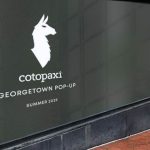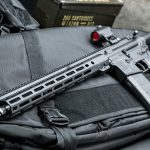While analysts are debating whether or not this Christmas will be a blockbuster year, the American consumer is speaking out and saying that they are ready to spend. Through a flurry of early holiday polls, customers have told retailers that they are going to spend more this year than last. The number so far is each person will spend $734 on gifts this season. That is a slightly higher estimate than the $690 for the same time last year.
While the bottom line may vary from study to study, Gallup, The National Retail Federation, RoperASW, and SIA have all found similar results this should be a very merry Christmas.
Between November 3rd and 5th, Gallup conducted a poll which noted that consumer optimism is now at its highest level over a year and a half. Consumer spending intentions are more positive than they have been at any point since 9/11. 29% of consumers say they plan to spend more over the next six months, compared to 21% who say they plan to spend less. This positive difference of 8 percentage points contrasts sharply with the -5 percentage-point difference of October 2002 and the -9 of November 2001.
Current consumer spending intentions are now at their highest level since Gallup began tracking them in October 2001.
In addition to spending more money through the holidays, Americans are more optimistic about the future., with 53% of consumers saying that economic conditions are getting better and 37% say they are getting worse – a spread of 16 percentage points.
All of these numbers indicate that consumers are ready to get out and spend more this holiday season.
“The stage has been set for the holiday season and retailers are ready to perform,” said NRF Chief Economist Rosalind Wells.
In their own study the NRF found some encouraging signs as well. Since September 16, NRF has forecast a 5.7 % increase in holiday sales, which would be the highest increase since 1999. The study also found that October retail sales rose 6.7% year-over-year.
The SIA reported a very positive outlook as well. Their study reported that 90% of the dealers surveyed were optimistic about the up-and-coming season. The country is divided, however, with areas with cooler temperatures in the early season – the Rockies, California, Northern New England and the western Midwest reporting sales figures ahead of last year. The rest of the country is reporting sluggish sales.
Alpine ski dealers say ski systems and boots have seen increased sales but binding sales are down. Soft shells seem to be the hot ticket along with cross-over outdoor apparel. All dealers reported to the SIA that woman's apparel sales are very strong compared to last year.
Among snowboard shops, unit sales are holding but downward price pressure is affecting dollar sales. This same downward pressure has caused some Vendors, like Burton, to consolidate their manufacturing (see BOSS_0346).
While the overall retail picture is looking good, Bicycle Retailer and Industry News reported that sales in bike shops are down 28% in both dollars and units sold for the quarter. Supplier sales were also down in the cycling market, off 14% in Q3. On the wholesale side of the cycling market things are not looking good either. Year-to-date unit shipments fell 22%, and sales declined by 15% on a dollar basis. These lower sales are surprising, given the very enthusiastic mood BOSS witnessed at InterBike. No numbers pertaining to future outlook were published.
Some analysts are saying that consumer outlook may be positive for the holiday season, but the underlying fundamentals are not in place for a real economic recovery. “There's still high unemployment and the uncertainty in Iraq, and several factors dampening expenditures,” Karl Bjornson, senior manager at Kurt Salmon Associates, told a local paper.
He went on to say that two major factors are contributing to the recent upturn in the economy. The first is the tax credit, which is long gone by now, and the second is the fact that last year was a very soft year, with numbers that are easy to beat.
Citing the high unemployment numbers and a lack of growth in the average wage rate Bjornson said, “There are still a lot of shoppers who have to stretch their dollars as far as they can this year.”
There are some positive numbers to be considered. U.S. employers added 286,000 jobs to their payrolls since August, the best gains since the economy entered a recession in 2001. Many analysts are pointing to this job growth as a clear sign of stronger economic times to come.
Meanwhile, early results from the kick-off weekend for the holiday shopping season were mixed. Poor weather impacted traffic on Friday in a number of regions in the east and it appeared that consumers were more focused on deep discounts in the early results.
Michael P. Niemira, a retail industry analyst with Bank of Tokyo-Mitsubishi Ltd., said of the weekend, “It was pretty good, but it wasn't spectacular.” He described business as stronger for discounters than it was for department stores and apparel merchants.
Ellen Tolley, a spokeswoman at the Washington-based National Retail Federation, noted that “it looks like (store) traffic was about the same as last year, possible a little better than last year.”
“It was as good as we had hoped for,” she said.











